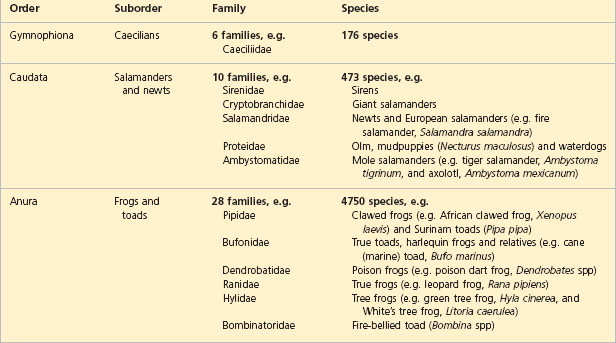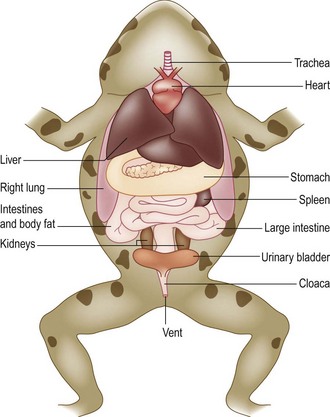23 Amphibians – an introduction
Husbandry
Anura
Adult anurans do not possess a tail, nor do they have external gills (Fig. 23.1). The hindlimbs are usually longer than the forelimbs, and toes are often webbed. To improve jumping performance, the vertebrae are fused (including the pelvic girdle), with presacral, sacral and postsacral regions. There is no sacrum. Although tadpoles can regenerate lost limbs, generally adults cannot.
Stay updated, free articles. Join our Telegram channel

Full access? Get Clinical Tree




